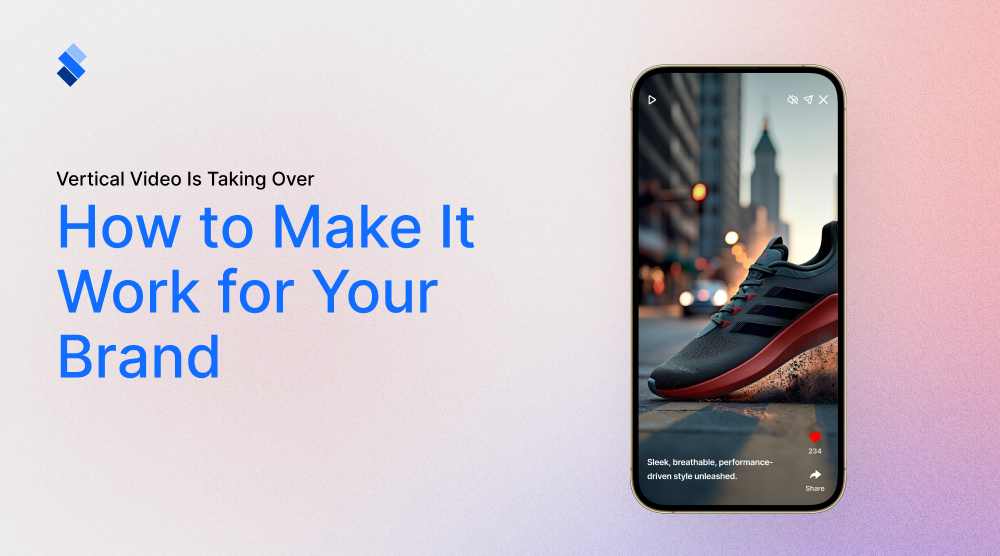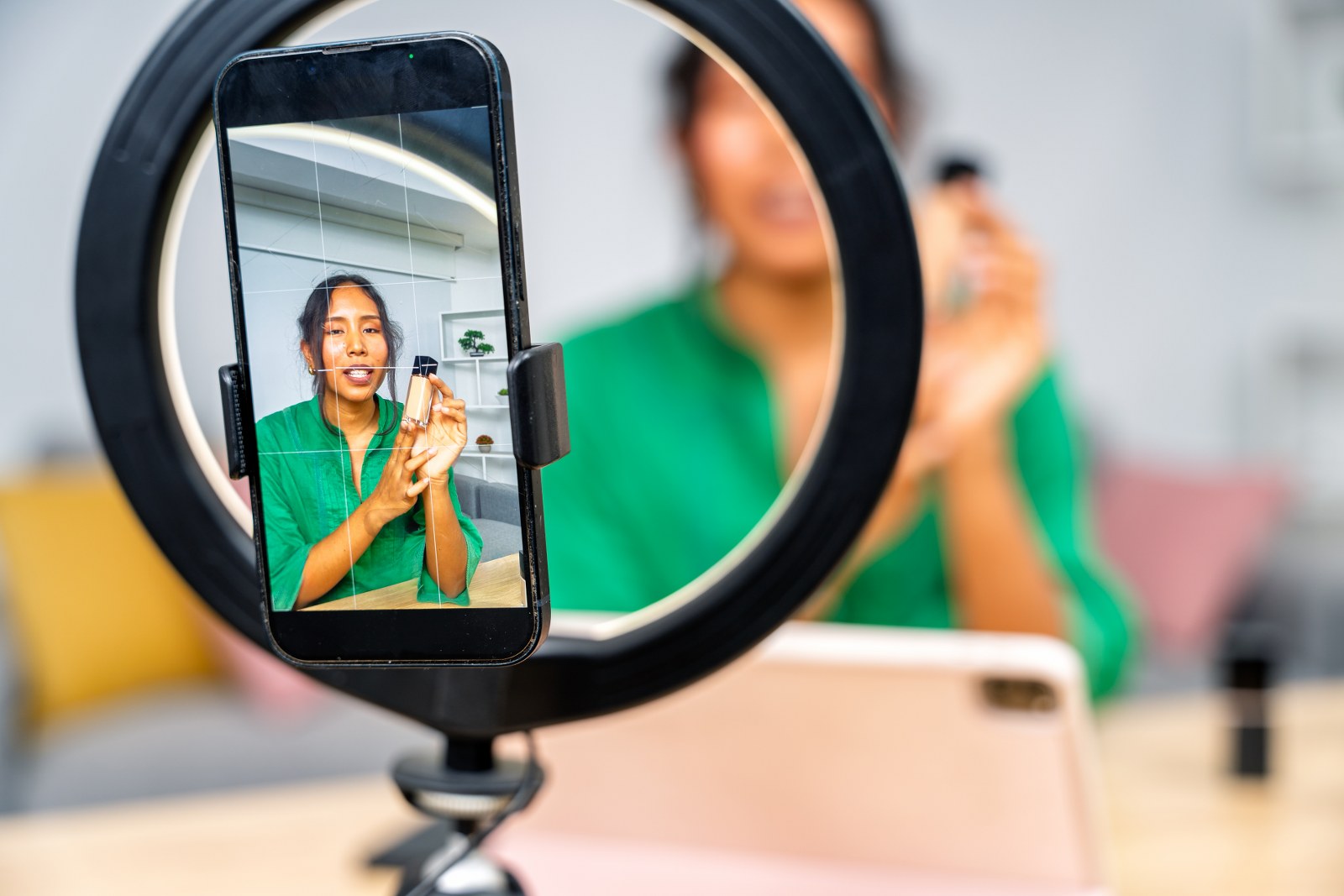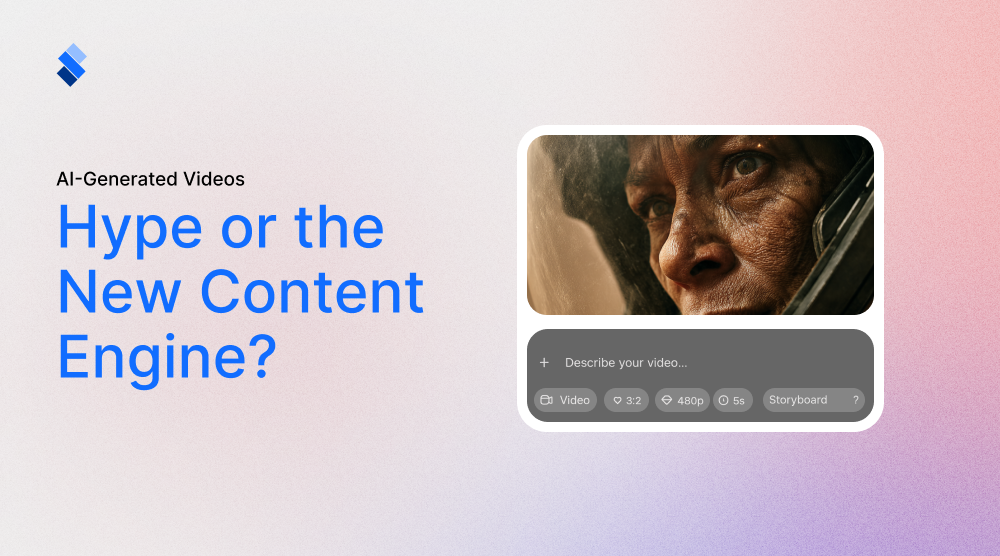Vertical Video Is Taking Over: Here’s How to Stay Ahead
Discover why vertical video is the king of modern marketing. Learn how its immersive, mobile-first format drives higher engagement and how to leverage authenticity, AI, and community to make your brand stand out.

When discussing different types of online content, there are a few topics that always come up. In the case of written content, the topics usually head to SEO and how difficult it can be to engage your local community. With images, you cannot help but discuss how AI has drastically changed the game. But if we are discussing modern marketing content as a whole, we cannot help but mention vertical videos. Due to several reasons, vertical videos have risen to the top of marketing content, both in popularity and viewer engagement. And in a market that is saturated with vertical videos, one always wonders whether there is a way to make one's brand stand out. Well, let's find out.
The rise of the vertical video
The current dominance of vertical video is by no means an accident. How we view content, how we interact with it, which devices we rely upon, how we share the content with our friends and family... All these factors played a role in crowning vertical videos the king of marketing content. And it stands to reason that if you have a better understanding of these factors, you'll be able to make better use of vertical content with your brand.
From TV to smartphone
The true rise of vertical content came with smartphones. In fact, if we take a look back at the past couple of decades, we'll see the drastic impact smartphones have had on marketing as a whole. Before, content was primarily made for either TV or PC. These platforms had certain standards that brands had to adhere to, like:
- Aspect Ratio had to be in the rigid 4:3 format (later 16:9 for widescreen).
- The 30-second time span was expected of all commercials.
- The brand's voice had to be formal, corporate, and aspirational.
- Storytelling was linear. Content usually followed a simple, linear A-B-C structure.
- The call-to-action was indirect and long-term (unless it was directed phone shopping, which we can consider a predecessor for online shopping). Phrases like "Visit your local retailer" or "Find us online" were common.
- Production quality was paramount. A high-gloss, professional finish was non-negotiable.

So, according to these standards, to garner any attention from marketing, one had to be a confident brand with polished content that can easily establish itself as a voice of authority. And you had to do so in a 30-second frame and in a 4:3 ratio. Well, smartphones made creating content cheaper, the content norms looser, and the nature of brand-customer interaction much more equal. No longer did we have a strict set of rules, but a plethora of options that we could make use of as we saw fit. And the creator didn't have to have a high-end studio or access to marketing companies to make anything worth watching. Vertical videos are cheap, easy, and open to imagination. The only limitation is that the aspect has to be vertical, usually in the 9:16 ratio.
The smartphone epidemic
Once smartphones started to hit the market, their presence really grew at an exponential rate. Before 2007, smartphones were only used by between 1-5% of the public. In 2007, iPhones hit the market, and quickly grew the presence of smartphones. In 200,8 it was over 5%. While in 2010 it reached 20%. Now came the explosive growth. In 2011, it was around 27%, and by 2015 when it had grown to 45%. The next jump was during the COVID-19 epidemic, when in 2020, 70% of people used smartphones on a daily basis. In 2025, it is safe to say that this number is close to 90%, which only highlights the cost of ignoring mobile-native content, especially for retailers.
Why was this so? Well, there are several reasons. A perfect storm, if you will, for the smartphone epidemic. First of all, smartphones came as a piece of technology that was both easy to use and quite powerful. Everyone who had one couldn't do anything but praise its features. And everyone who didn't have one couldn't wait to get it. Year by year, phones became more powerful and cheaper, and WiFi became faster and more widespread. At a certain point, it became the case that having a smartphone wasn't a luxury but a necessity.
A psychological shift towards intimacy and immersion
If a person from 2006 were reading this, they might have hoped that our use of smartphones was to our own betterment. After all, it is fair to say that we have the world's largest database of knowledge right in our pocket. And considering how often we use it, the 2006 person would hope that the world is a far more informed and educated place. Or, that at least we are always in close connection with our friends and that we rarely feel alone or misunderstood.

Alas, we all know that the reality is far from so. Between 35-40% of smartphone usage is spent on social media. During this time, users tend to enjoy our content feed and share it with their friends and family. The concept of "content feed" is a relative novelty, even among smartphones. Namely, the idea that you can endlessly scroll through content is a fairly novel one. But it is also the crux of why vertical videos are so popular, especially when it comes to retail. With vertical videos, a user will have a full-screen immersion through their phone, which is critical for conversion. By commanding the user's entire field of vision, you temporarily shut out competing notifications and content. In the modern age of short attention spans and ever-competing brand messaging, this forced focus leads to significantly higher engagement and conversion rates. For example, a study by Instagram found that vertical video ads see a 30-35% higher video view completion rate compared to horizontal video ads.. The idea is that the immersive environment transforms passive viewers into active participants.
The democratization of content creation
The rise of vertical video is also closely linked to the democratization of content creation. Before, only a small number of brands with high-end budgets could afford quality commercials. Nowadays, modern smartphones and AI tools make content creation easy and cheap. With a smartphone in nearly every pocket and sophisticated, free editing tools built directly into platforms like TikTok and CapCut, anyone can become a creator. And with visual design platforms like StorifyMe, any brand can make their videos top-notch.
Of course, it is still not possible to mimic a video where a company spent millions on pre-production, design, actors, etc, but the great thing is you don't have to. The explosion of User-Generated Content (UGC) has created a cultural shift towards a more authentic, less polished aesthetic. For brands, this meant they could produce content rapidly and cost-effectively, moving away from high-budget productions towards a more relatable style. This ease of creation is one of the key reasons why vertical videos are so popular and why they were seen not as a compromise to quality marketing, but as the preferred language of digital storytelling. The proof, as always, is in the numbers. In 2025, 93% of businesses see video marketing as an important part of their strategy.
Making use of vertical videos
Now that we've gone over the history, let's now focus on the present. It should be pretty obvious that using vertical videos is paramount in modern marketing. The only question is how to make the most out of them. Well, as with all marketing content, there is no one-for-all solution. Every brand likely has different marketing needs and must understand its audience to meet them. So, let's go over some of the important aspects you need to keep in mind when it comes to vertical videos.
Understanding the basics
Out of all the videos that a person will go through their feed, why should they watch yours? This question is a valuable starting point when making vertical videos. Understand that you are competing with a large number of similar videos that the algorithm will push to the viewer (and potential customer). So what will make yours stand out?
Before creating a single video, understand the context in which it will be viewed. A person is likely scrolling through dozens, if not hundreds, of videos in a single sitting. Therefore, when they come upon yours, you only have 1-3 seconds to prevent a scroll. Your content must have an immediate visual or emotional hook. This can be a striking visual, a compelling question on screen, or an unexpected action.

Furthermore, assume your video will be watched both with and without sound. For sound-on use compelling music, clear voice-overs, and impactful audio cues from the very first frame. For sound-off, use bold, easy-to-read captions and on-screen text that tells the story visually.
What actually works in the vertical format
Even now, we can see that there are certain rules to vertical videos, even though they provide endless possibilities for experimentation. So, while the following are more guidelines than rules, we would advise that you deeply understand them before you start making your own:
- Embrace authenticity over polish - Highly polished, corporate-style ads often underperform. Users are far more likely to connect with content that feels real, raw, and human. Use quick cuts, handheld shots, and genuine reactions.
- Make use of story loops - Many successful vertical videos rely on video storytelling. A video story can follow certain story beats like: Problem -> Solution -> Result. For example: "Struggling with frizzy hair?" (problem) -> "Watch me use this serum" (solution) -> "Smooth hair all day!" (result). This creates a satisfying, mini-narrative.
- Embrace trends - There is nothing wrong with following a trend. Just as long as it has some connection to your brand. Feel free to participate in viral audio, challenges, and video formats, but always add a brand-relevant twist. By doing this, you will show you're culturally aware and can have fun. But you will also ensure that your content is aligned with your identity.
- Strong, Clear CTAs - Tell the user exactly what you want them to do, but make it native to the platform. A good example would be: "Comment with your best tip below" or "Tap the link in our bio." A bad one would be: "Visit our website for more information" (without a clear, easy path).
Shifting to community-driven content
Considering how easy it is to create quality content, it is becoming harder and harder to come up with something that the audience will find interesting. Luckily, you don't have to. A terrific idea for almost all brands is to move from broadcasting to curating. By relying on community-driven content, your role shifts from being the sole creator to being the best curator of content about your brand. Here, your goal is to instigate communication between your customers.

For instance, you can feature your customer reviews and respond to comments in the video. This provides social proof that is far more powerful than any ad. And, it provides a stage where customers can discuss your product, and inadvertently, your brand. Another option is to create a branded hashtag challenge. A simple, fun, and repeatable challenge that encourages users to create content with your product. The goal is virality through participation.
Ultimately, your goal is to build a community, not just an audience. An audience merely listens while a community participates. And as you can imagine, this participation can yield tremendous results. This isn't strictly done by creating vertical videos, but by leveraging their ease of creation and innate sharability. When used properly, vertical videos in combination with the comment section in them can be a great platform for conversations with your community.
Scaling with AI
Once you start tackling the customer feed, you'll soon see that the demand for consistent, platform-native content is immense. A single video is never enough to boost your marketing, even if you get millions of views. Luckily, by relying on different AI tools, there is a way to scale up your video production.
When used properly, AI can be great for scalability. For instance, you can:
- Use tools like ChatGPT or DeepSeek to brainstorm dozens of video ideas based on your niche, a trending topic, or a specific product.
- Repurpose long-form content into shorter videos. Tools like Opus Clip, Pictory, or Veed.io use AI to automatically identify the most engaging clips from a webinar, podcast, or long video and repurpose them into vertical shorts, complete with captions.
- Automatically edit with platforms like Canva, StorifyMe, and CapCut. These AI features can automatically resize videos, suggest cuts, sync clips to music, and generate captions, drastically reducing editing time.
- Analyse your video library to understand which of your vertical videos are performing best, why they are working (e.g., retention at specific points), and get recommendations for future content.

Final thoughts
Vertical video is not a trend, but the new foundation of digital marketing. Its dominance is a direct result of the smartphone era, offering unparalleled immersion and engagement by fitting the way we naturally consume content. But even though vertical videos are currently dominant, there is no guarantee that your brand will profit by using them. Success requires more than just a vertical aspect ratio. You need to make a strategic shift towards authenticity and community over polish and broadcasting. By leveraging these principles and using StorifyMe to ease creativity, you can move beyond simply being seen to building a loyal, participatory audience. Mastering vertical video means speaking the native language of the modern consumer.






